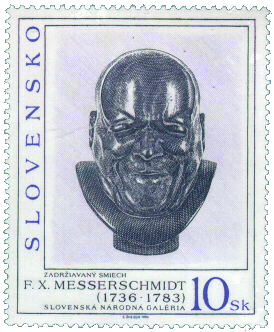The sculptor Franz Xaver Messerschmidt (1736-1783) is one of the most interesting figures in central European 18th-century art. Even his earliest works were surprising in their professional maturity, impeccable sovereignty over the material and conceptual ambition. Messerschmidt came from a family of South-German wood-carvers and learned his craft with his uncles, J.B. Straub in Munich and J.G. Straub in Graz, before acquiring a broad schooling in art at Vienna's Academy of Fine Art. Following a visit to Italy, he lived from 1760 to 1775 in Vienna, where he was a sculptor of standing. The concluding phase of Messerschmidt's creative life unfolded in Bratislava, where he settled in 1777. It was here that his work on numerous, almost life-size heads in various materials had its culmination. A large number of these consist of facial expressions and portraits that are extremely naturalistic in form. Sixty-nine such works were found in his studio after his death. A mere ten years later they were accorded a first exhibition in Vienna, for which they were collectively dubbed Character Heads and given the individual titles by which they are still known. Fascination with these works, their caricatural grimaces and ornamental stylisation, continues to this day. Direct sources of inspiration in the research of scientists and in the works of artists, they are a frequent feature of exhibitions and permanent collections.
|

